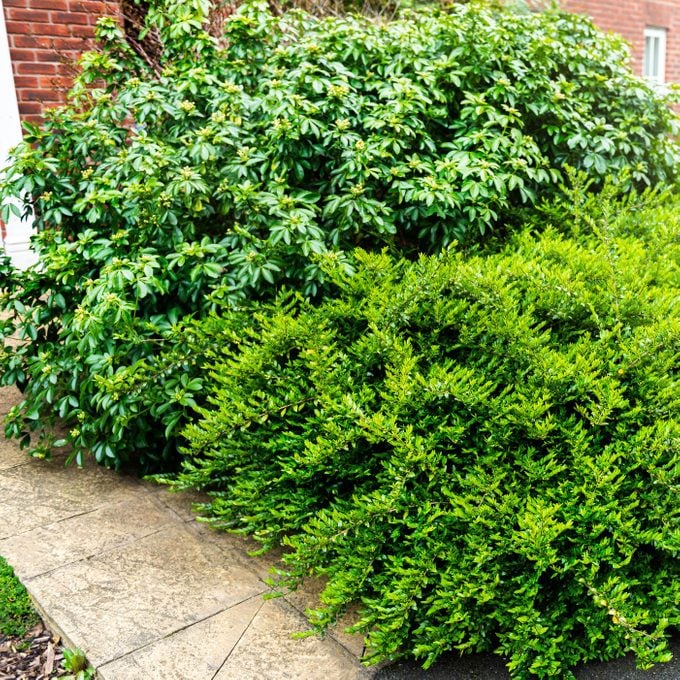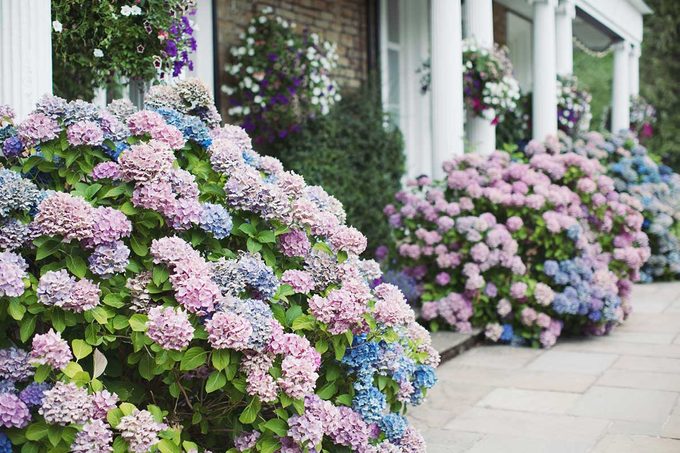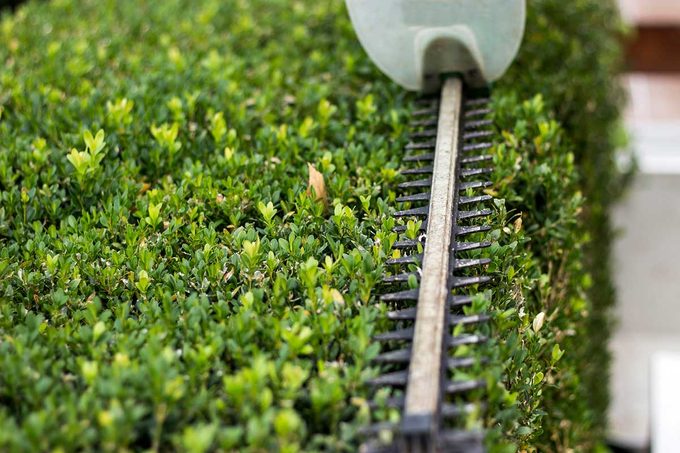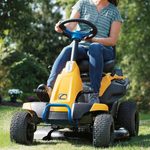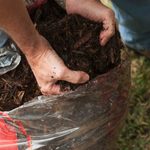Homeowner’s Guide to Shrub Care
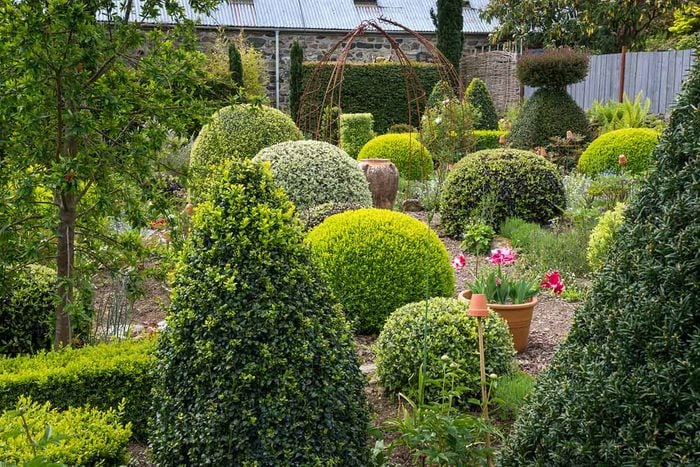
They're a landscape mainstay, second only to trees in stature. Our handy guide will help ensure your shrubs get the attention they deserve.
Our editors and experts handpick every product we feature. We may earn a commission from your purchases.
Shrubs get the short shrift. That’s not only a tongue-twister, it’s sadly a statement of fact. Homeowners may look to the beauty of flowers, productivity of vegetables and majesty of trees. But shrubs are often overlooked.
Yet shrubs are a critical part of the ecosystem. They’re found throughout the world and play an important role in stabilizing soil, storing carbon and supporting myriad insect and animal species. And that’s before we even talk about their ornamental value, which has increased markedly over the past two decades, thanks to skilled plant breeding.
On This Page
What is a Shrub?
Most people use the terms “shrub” and “bush” interchangeably, but some would say there is a distinction: Shrubs are found in the home landscape, bushes in natural thickets.
Whatever you call it, it’s safe to say a shrub is a small, perennial, woody plant maturing at less than 15 feet. Some are tall and upright, others short and squat. Almost all of them are multi-stemmed — likely an evolutionary adaptation to animal browsing. However, some shrubs can be trained into a single-stem habit that mimics a tree (they’re called treeform shrubs).
Types of Shrubs
There are three main types of shrubs.
- Deciduous shrubs drop their leaves in fall. They are often planted for seasonal interest, whether it’s flowers, colorful bark, fall foliage or a combination.
- Evergreen shrubs hold onto their leaves throughout the year. There are needled evergreens (yew, for example) as well as some with flattened sprays of tiny scale-like leaves (arborvitae) and others with broad leaves (rhododendron).
- Flowering shrubs can be deciduous or evergreen. Some flowering shrubs bloom before leaves appear (forsythia), others when the plant is leafed out (hydrangea). Shrubs can bloom at any time — some, like witch hazel and winter jasmine, even in winter.
Choosing Shrubs for Your Landscape
Consider these five things when choosing shrubs for your landscape.
Hardiness
As with any plant you hope to maintain over the long term, first consult the U.S. Department of Agriculture Plant Hardiness Zone map. There’s no sense buying a USDA Zone 7 camellia if you live in Zone 3 or 4. The plant tag will provide the USDA zones.
Bear in mind that there are microclimates around a home, so a marginally hardy shrub may succeed in a sheltered location by the house but not in a wind-exposed site.
Purpose
Next, consider what you want the shrub to accomplish. Privacy is a big consideration for many people, and there’s no beating an upright evergreen, like arborvitae or juniper, for privacy. For a focal point, however, choose a shrub with a unique shape, captivating flowers or other quality that makes it stand out.
There are also shrubs with wildlife value, particularly those with flowers and berries.
Conditions
Where will the shrub be placed? How much light is available and what’s the soil drainage like?
Don’t set the shrub up for failure by planting it in an inhospitable spot. Some are better suited to hot, sunny locations; others prefer damp, shady spots. And some shrubs are tough enough to take whatever conditions they’re planted in. The plant tag should provide details on optimal conditions.
Features
Gone are the days where homeowners would bother with a shrub that flowered for a week before fading into oblivion the rest of the year. Some of the newest cultivars have multiple features, including long-lasting flowers, peeling bark and fall foliage. Some even do an encore flower show later in the season.
Maintenance
Privet used to be a popular, quick-growing hedge, but homeowners got tired of having to shear the plants repeatedly. It’s one shrub you’d probably regret planting in your yard. Consider how much effort and time you’re willing to put into maintenance — not only pruning shrubs, but also watering them. There are drought-tolerant options available.
How To Plant Shrubs
Planting a shrub is like planting a tree — just a little faster because of the size difference.
If you’re installing a shrub bed from scratch, amend the soil beforehand with compost and composted cow manure. Dig a hole as deep as the root ball but twice as wide. Place the shrub and backfill the soil, tamping lightly to settle it. Add an organic mulch, such as shredded leaves or wood chips. Then water generously.
Shrub Care and Maintenance
Even low-maintenance shrubs need basic care. Here’s what you can expect:
Trimming
Dead, diseased or broken branches can be removed anytime, but major pruning is best done when shrubs are dormant. Shrubs such as lilac and red-twig dogwood benefit from rejuvenation pruning, which is periodically removing one-third of the oldest stems to encourage new growth that’s more productive or colorful.
Watering
Even drought-tolerant shrubs can use regular watering their first year, so they establish roots and become self-sufficient. Irrigate slowly and deeply so the water penetrates to the entire root system. One option is to wind a soaker hose through the shrub bed to gradually water everything at once.
Fertilizing
Like trees, shrubs seldom need fertilizing. A weed-free zone beneath the shrub and a natural, organic mulch like shredded leaves is adequate in most cases.
If the shrub is stunted or yellowed, test the soil and fertilize if needed. The pH might also need adjusting. Add sulfur to acidify soil, garden lime to make it more alkaline.
Winter Protection
Some evergreens require protection against drying winter winds, either by wrapping in burlap or spraying with an anti-desiccant. Where deer or rabbits are a problem, fencing or animal repellent spray may be needed.
Browsing animals seem to have their favorites, and this can differ even among different varieties of the same species, such as red-twig dogwood. Your local cooperative extension can help steer you to the best plants to avoid animal browsing.
Pest Control
Insects and disease are more of a problem when a plant is under stress, whether it’s from drought, mechanical injury or just being planted in the wrong spot. Try to keep shrubs from being stressed and inspect them regularly for signs of trouble. As with any plant problem, the earlier you deal with it, the better things turn out.
